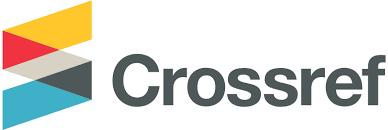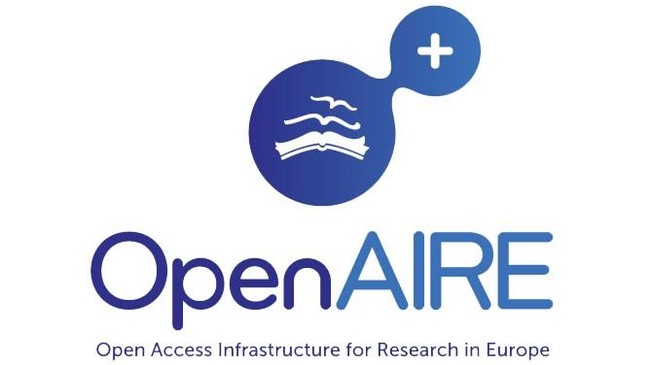AUTOMATION OF SPEED MEASUREMENT IN MILLIKAN OIL DROP EXPERIMENT USING YOLOv5 ALGORITHM
OTOMASI PENGUKURAN KECEPATAN PADA EKSPERIMEN TETES MINYAK MILIKAN MENGGUNAKAN ALGORITMA YOLOv5
DOI:
https://doi.org/10.21009/03.1301.FA06Abstract
The Millikan oil drop experiment plays a crucial role in determining the fundamental value of the electron charge by calculating the speed of oil droplets to measure the electrostatic force. However, the manual analysis of this process is time-consuming. This study proposes the use of the YOLOv5 algorithm to automate the measurement of oil droplet speed, aiming to improve efficiency and accuracy. The YOLO algorithm is an object detection approach utilizing computer vision techniques. The methodology includes recording videos of the oil droplets, annotating data using Roboflow, training the YOLOv5 model with a dataset augmented tenfold, and evaluating the model using the mean Average Precision (mAP) metric. The results showed a mAP score of 0.355 during training, with the highest precision approaching 1.0 when recall was near 0. Speed measurements using YOLOv5 were compared to manual methods, resulting in a relative error of 3.79% and an average time difference of 0.1274 seconds. Although the mAP score was not particularly high, the model was able to consistently detect oil droplets. The model's performance heavily depends on the network type, dataset size, and dataset structure. The accuracy of speed calculations was reasonably good compared to reference data, with an error rate below 5%. Overall, the algorithm simplifies the experimental process and enhances the ease of conducting the experiment.
References
[1] S. W. R. Nasution, “Pengaruh Penguasaan Pengukuraan Terhadap Hasil Belajar Fisika Siswa
Pada Materi Besaran dan Satuan,” Jurnal Education and development, vol.7, no. 4, pp. 176, 2019.
[2] T. Yusuf, H. S. Putra, N. Faliza, Dasar Metodologi Penelitian: Teori, Desain, dan Analisis Data. Sumatera Barat: Tazaka Innovatix Labs, 2023.
[3] M. M. Sanaky, L. M. Saleh, H. D. Titaley. “Analisis Faktor-Faktor Penyebab Keterlambatan Pada Proyek Pembangunan Gedung Asrama MAN 1 Tulehu Maluku Tengah,” Jurnal Simetrik, vol. 11, no. 1, pp. 433, 2021.
[4] A. Elyas, Pembuatan Perangkat Lunak Viasualisasi Eksperimen Tetes Minyak Milikan dengan Menggunakan Adobe Flash. Surakarta: Universitas Sebelas Maret, 2013.
[5] M. I. Alim, et al., Tetes Minyak Milikan. Surabaya: Institut teknologi Sepuluh Nopember, 2017.
[6] S. Elzsa, et al., “Tetesan Minyak Milikan,” Journal Fisika Modern, vol. 1, no. 1, pp. 1-3, 2018, doi: https://doi.org/04/04.
[7] R. A. Serway, Modern Physics. United States: Thomson Brook, 2019.
[8] P. A. Tipler, Modern Physics Fifth Edition. New York: W.H. Freeman and Company, 2017.
[9] Y. Khery, A. Nufida, Suryati, Serial Modul Pembelajaran Berorientasi Nature Of Science (NOS) Kimia Umum: Atom, Molekul, dan Sifat Zat. Yogyakarta: Deepublish, 2019
[10] R. Firmansyah, R. Rohmah, F. Salimatul, E. Yahya, “Tetes Minyak Milikan,” Jurnal Fisika Modern Tetes Minyak Milikan, vol. 1, no. 3, pp. 1-6, 2018
[11] N. Rahmawati, Roihatur, Leni., E. Yahya, “Tetes Minyak Milikan,” Jurnal Praktikum Tetes Minyak Milikan, pp. 1-5, 2017
[12] A. Esteva, K. Chou, S. Yeung, N. Naik, A. Madani, A. Mottaghi, Y. Liu, E. Topol, J. Dean, R. Socher, “Deep learning-enabled medical computer vision,” Nature Partner Journals Digital Medicine, vol. 4, no.5, pp. 1, 2021, doi: https://doi.org/10.1038/s41746-020-00376-2
[13] P. E. Cahyo, A. M. Rolly, R. Andarsyah, Tutorial Object Detection People With Faster region-Based Convolutional Neural Network (Faster R-CNN). Bandung: Kreatif Industri Nusantara, 2020.
[14] Arnita, et all. Computer Vision dan Pengolahan Citra Digital. Surabaya: Pustaka Aksara, 2022
[15] Q. Aini, “Deteksi dan Pengenalan Objek dengan Model Machine Learning: Model YOLO,” CESS (Journal of Computer Engineering System and Science), vol. 6, no. 2, pp. 192-193, 2021, e-ISSN :2502-714x.
[16] T. Diwan, G. Anirudh, V. Jitendra, Tembhurne, “Object detection using YOLO: challenges, architectural successors, datasets and applications,” Multimedia Tools and Applications, pp. 9243-9244, doi: https://doi.org/10.1007/s11042-022-13644-y.
[17] B. Aldughayfiq, F. Ashfaq, N. Z. Jhanjhi, M. Humayun, “YOLOv5-FPN: ARobust Framework for Multi-Sized Cell Counting in Fluorescence Images,” Journal Diagnostics, vol. 13, no. 2280, pp. 1-2, 2023.
[18] G. B. Prananta, H. A. Azzikri, C. Rozikin. “Deteksi dan Pengenalan Gestur Tangan Secara Real- Time Menggunakan Jaringan saraf Tiruan Konvolusional,” Jurnal Methodika, vol. 9, no. 2, pp. 31, 2023
[19] N. Hidayat, S. Wahyudi, A. A. Diaz, “Pengenalan Individu Melalui Indentifikasi Wajah Menggunakan Metode You Only Look Once (YOLOv5),” Jurnal Seminar Nasional Matematika, Geometri, Statistika, dan Komputasi, 2022, https://magestic.unej.ac.id/
[20] A. H. S. B. Budi, M. A. Baiqumi, B. Mulyanti, M. Fadli, “Sistem Deteksi Laju dan Plat Nomor Kendaraan Berbasis Video Rekaman Menggunakan YOLOv5-DeepSORT dan HyperLPR,” Jurnal Telekontran, vol. 11, no. 2, pp.142-143, 2023




